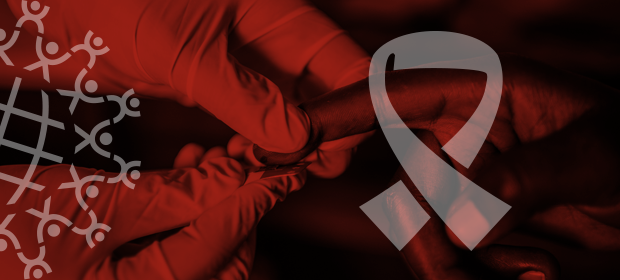Where We Work
See our interactive map


For some kids, adolescence began with a diagnosis. These health workers are helping them navigate all that comes with it.
In remote northern Namibia, more than 30 teenagers have gathered at the Andara District Hospital. They’re playing games, socializing, and just being kids.
They’re also sharing their experiences around antiretroviral medications, self-esteem, mental health, teenage pregnancies and abuse, high viral loads, and other issues many HIV-positive teens have on their minds.
There are an estimated 17,000 young people living with HIV in Namibia, including hundreds in Andara district in the Kavango East region. Most of these children have lost one or both of their parents to HIV. Many more are abandoned or shunned.
As I listen to the group, one boy’s comment really sticks with me.
While providing antiretroviral therapy (ART) services to children in Andara, IntraHealth International and local health workers found that HIV-positive adolescents in the district had lower rates of adherence to ART, which was resulting in higher viral loads than in local adults. Health workers also found that adolescents, especially the school-going and orphans of this group, struggled to keep their ART clinic appointments.
This could be because they hadn’t disclosed their HIV status to others. Or it could be because of stigma and discrimination, or the long distance from home or school, or lack of support from guardians.
Whatever the reasons, local health workers wanted to help.
That’s why Andara district decided to not only equip health workers with the skills and knowledge they need to provide services specifically to teens, but also to establish teen clubs.
The district, in collaboration with IntraHealth’s USAID HIV Clinical Services Technical Assistance Project and the Ministry of Gender Equality and Child Welfare, conducted a series of trainings to make sure Andara’s health workers were ready to provide the care adolescents need. The primary health care supervisor, nurses, health assistants, and the nurse leading the teen club all attended the trainings, which covered topics such as HIV disclosure for children.
When Andara district and the newly trained health workers introduced the teen clubs in November 2017, attendance was low. But slowly, positive feedback from attendees spread. Now the Andara District Hospital hosts a teen club meeting every month, led by a health professional and a community facilitator, where dozens of kids between the ages of 10 and 19 gather.
As I listen to the group, one boy’s comment really sticks with me. He is 14 years old, and tested positive at 13. He learned about the teen club from an ART nurse at the hospital.
“Before I started coming here, I was hopeless,” he says. “I was afraid of having HIV and of dying. Now I’m more at peace because I know that if I take my medicine, I can live with HIV. I’m not afraid anymore. I’ve learnt that being positive does not mean that I’m an outcast in the community.”
Although he’s struggling with a high viral load right now, he believes that, with the support and information he’s receiving, he will manage to reach such a low viral load that it becomes undetectable.
For many of these children, adolescence began with a diagnosis.
This young boy exemplifies how psychosocial support works in concert with medical care and treatment to give people who live with HIV a new outlook on their future.
“I enjoy working with these teenagers,” says Olivia Simango, a registered nurse, ART in-charge, and teen club leader. “I understand their problems and fears. It is rewarding when you see change in their behavior—like before, most of these kids had poor adherence to treatment and follow-up to appointments, but now the adherence is good and they stick to follow-ups.”
For many of these children, the transition to adolescence began with learning that they are HIV-positive. This can be both a mental and physical challenge.
“This is the group in our society for whom it is most difficult to come to terms with their health status,” Simango says. “I enjoy managing to help them through whatever challenges they are faced with, successfully solving problems, achieving the desired results.”
Most of the young people at the club were informed about their status by counselors, health workers, or social workers who are involved in the disclosure process. Once they’ve learned their HIV status, they are eligible to enroll in the teen club and the psychosocial support program. Meeting dates are communicated through SMS text messages and signs posted at the clinic.
Comprehensive HIV care and treatment goes beyond providing antiretroviral medications. This psychosocial support is essential, especially for children and teenagers. A strong social network with positive role models can help them overcome the daily challenges of living with HIV.
The Andara team is hoping the initiative will bridge gaps between parents, their children, and the service providers, and ultimately foster a relationship that will benefit all stakeholders in the fight against HIV and AIDS.
Through this, young people can build positive relationships, improve their self-esteem, and acquire life skills to better manage their health, leading to a life like any other teen.
IntraHealth is working with the government of Namibia to increase the number of health workers providing HIV services and provide the support and training they need to reach the country’s goal of an AIDS-free generation. IntraHealth’s USAID HIV Clinical Services Technical Assistance Project in Namibia is funded by the US Agency for International Development (USAID) through the President’s Emergency Plan for AIDS Response (PEPFAR).
Get the latest updates from the blog and eNews




